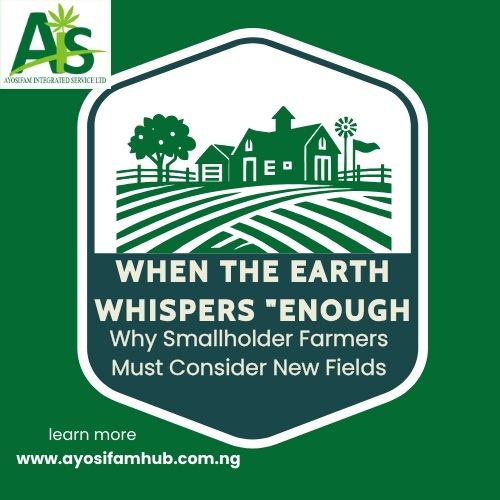For the dedicated smallholder farmer, the land is more than just soil; it’s a legacy, a source of sustenance, and the foundation of their livelihood. The familiar rows and the earth’s feel underfoot are deeply ingrained. However, even with the most diligent care, the land has its limits. When yields of staple crops like cassava and potato dwindle significantly from previous harvests, it’s a clear signal: the soil is tired, and it’s time to consider a change of scenery, at least for a while.
Ignoring this whisper of the earth can have dire consequences. Continued cultivation on depleted soil leads to a vicious cycle of low productivity, increased input costs (for fertilizers that offer diminishing returns), and ultimately, food insecurity. For cassava and potato farmers, crops vital for both household consumption and local markets, this decline can be particularly devastating.
Why Does Soil “Tire Out”?
Several factors contribute to declining soil fertility:
Nutrient Depletion: Continuous cropping, especially without proper nutrient management practices, extracts essential minerals like nitrogen, phosphorus, and potassium from the soil. Cassava and potatoes, while relatively hardy, still require these nutrients for optimal growth and tuber development.
Soil Structure Degradation: Repeated tilling and the lack of organic matter can lead to soil compaction, making it difficult for roots to penetrate, water to infiltrate, and air to circulate. This hinders plant growth and nutrient uptake.
Pest and Disease Buildup: Over time, specific pests and diseases that target cassava and potatoes can accumulate in the soil. These can significantly impact yields and even lead to complete crop failure.
Weed Infestation: Persistent weed pressure can rob crops of vital resources, and certain weed species can become particularly problematic in the same fields year after year.
Changes in Soil pH: Continuous use of certain fertilizers or natural soil processes can alter the soil’s acidity or alkalinity, making it less suitable for specific crops.
The Inevitable Decline: Recognizing the Signs
Experienced farmers often have an intuitive understanding of their land. However, clear indicators signal the need for a change:
Consistently lower yields: This is the most obvious sign. If harvests are significantly smaller despite consistent farming practices, the soil is likely the culprit.
Stunted plant growth: Plants may appear weak, yellowed, or generally unhealthy, indicating nutrient deficiencies.
Increased susceptibility to pests and diseases: Plants growing in poor soil are often less resilient.
Noticeable changes in soil texture: The soil might feel hard and compacted or excessively sandy and unable to retain moisture.
The Wisdom of Relocation: A Temporary Solution for Long-Term Gain
When these signs become undeniable, considering a temporary relocation of the farm is a prudent decision. Moving to a new plot of land allows the previously cultivated area to undergo natural regeneration. This “resting” period offers several benefits:
Nutrient Replenishment: Natural processes, such as the decomposition of organic matter (weeds, crop residues), gradually replenish soil nutrients.
Pest and Disease Cycle Disruption: Without the host crop, populations of specific pests and diseases decline over time.
Improved Soil Structure: Natural vegetation can help to break up compacted soil and improve its overall structure.
Weed Seed Bank Reduction: Allowing the land to lie fallow or grow different types of vegetation can help reduce the buildup of troublesome weed seeds.
The Option to Return: A Renewed Partnership with the Land
The beauty of this strategy is that it doesn’t necessarily mean abandoning the original farmland permanently. After a sufficient resting period, which can vary depending on the soil degradation and local environmental conditions, farmers can often return to a more fertile and productive field. This rotational farming approach is a sustainable way to manage soil health and ensure long-term productivity.
Considerations for Smallholder Farmers:
While relocating can be beneficial, smallholder farmers face unique challenges:
Land Availability: Access to new or fallow land can be limited.
Labor and Resources: Clearing and preparing a new plot requires additional effort and resources.
Knowledge and Skills: Farmers may need guidance on identifying suitable new locations and managing them effectively.
Despite these challenges, recognizing the signs of soil exhaustion and considering temporary relocation is a crucial step towards ensuring sustainable livelihoods for cassava and potato smallholder farmers. It’s about listening to the land, respecting its limits, and making strategic decisions that will benefit both current and future generations. The earth provides generously, but it also requires periods of rest and rejuvenation to continue its vital work.




